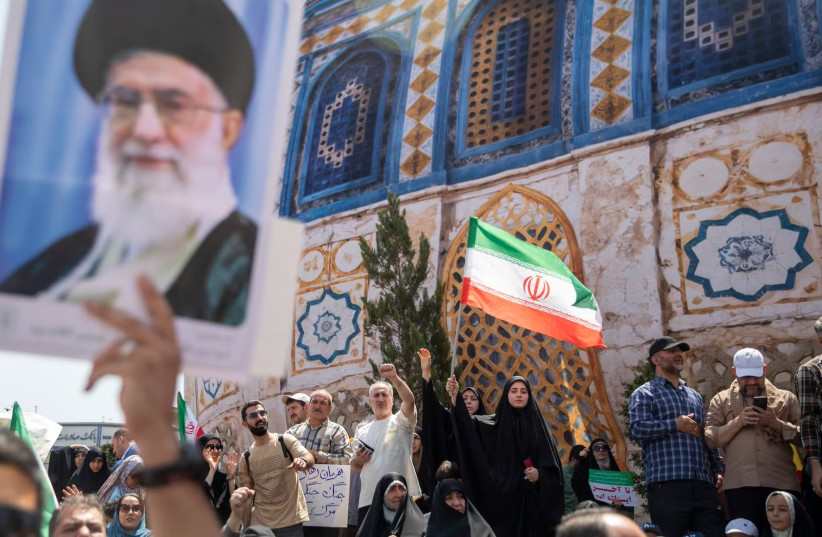
According to a ChatGPT assessment, the chances of Tehran fully adhering to the ceasefire agreement in the next 30 days are no higher than 45%.
A ceasefire between Israel and Iran, brokered by the United States and Qatar, was announced Tuesday morning. However, shortly afterward,
Iran continued to violate
the agreement by launching rockets into the North.
Israel responded, while the
US President Donald Trump
warned both sides. However, the history of the Ayatollah regime shows a pattern of evading agreements, and at 5:00 p.m., it seemed that the fragile understandings were facing their first test. OpenAI’s o3 model was asked to analyze the recent developments and assess the chances of the Ayatollah regime adhering to the agreement.
The OpenAI o3 model, upon which this analysis is based, uses a systematic reasoning process called a “chain of thought” that involves cross-referencing sources and logical analysis before providing the final answer. Unlike previous models that primarily focus on statistical language patterns, o3 mimics human expert work and reduces contextual errors, enabling deeper and faster intelligence and security assessments.
The ceasefire was reached after twelve days of conflict, which included airstrikes on Iran’s nuclear infrastructure and rocket attacks on American and Israeli targets. Despite Trump’s statement about a “complete ceasefire,” the full details of the mechanism have not been published, and the Iranian regime insists it achieved a “strategic success” when Israel agreed to stop its attacks twelve hours after the Iranian firing ceased.
Shortly after the agreement came into effect, explosions were heard in Tehran’s suburbs, and Iran blamed Israel for violating the agreement, while the IDF clarified that ammunition storage sites used for launching rockets near the time of the signing were attacked.
In the political arena, the
US and Qatar
are forming a joint monitoring team responsible for real-time tracking of missile launches. According to diplomatic sources in Doha, US Central Command officers have set up an operations room at Al-Udeid base that enables alerts within minutes for Israeli and American air defense teams. However, the success of the mechanism depends on Iran’s willingness to grant access to its control systems, and under current circumstances, this is a condition that no one in Tehran has publicly committed to.
What is the estimate based on?
This estimate is based on three key factors. The first is history: Iran has previously violated International Atomic Energy Agency limits, exceeded uranium enrichment thresholds, and concealed the locations of advanced centrifuges, so international trust is nearly nonexistent.
The second is command structure: The Revolutionary Guards enjoy autonomy to conduct “low signature” attacks through Hezbollah, Iraqi militias, and the Houthis, without official documentation in Tehran, allowing the regime’s leaders to deny responsibility and apply measured pressure on Israel. The third is the growing internal economic pressure; inflation is approaching 50%, the local currency has crashed, and the loss of oil revenue exacerbates protests in major cities, creating a positive incentive to preserve a temporary lull to ease the situation in Iranian streets.
The baseline scenario, which receives a weight of 35%, foresees a fragile continuation of the ceasefire in the short term but with the preservation of “small arms fire” from Lebanon, Iraq, and Yemen borders. The full violation scenario, which I assign 25%, would result from an Iranian decision to restore deterrence after Quds forces suffer losses from Israeli asymmetric attacks.
On the other hand, a more conservative scenario, with only 15%, includes Iran fully adhering to the agreement for three months, mainly if American pressure is conditioned on humanitarian economic aid. Moreover, an increase of several percentage points in oil prices is already noticeable in world stock markets, and investors expect a “temporary relief” but not a complete respite in geopolitical risk.
According to the AI model, if, in the coming week, it is determined that the proxy organizations continue medium-range fire, Israel might revert to a “head of the snake” policy – attacking Revolutionary Guard infrastructure and command centers in Syria or Iraq – and the ceasefire will turn into another short chapter in the chain of regional tensions.
If the
regime in Tehran
decides to focus on quelling public anger at home, it may lower its military profile and establish a new “quiet for quiet” policy, but there is always the concern that a more extreme faction within the Revolutionary Guards, worried about its political position after President Raisi’s death, may choose to fire to demonstrate power.
Therefore, in today’s reality test, the agreement is on borrowed time, and any small change in the deterrence balance could bring the region back to the boiling point.
In conclusion, at least according to the AI assessments, it is too early to unpack the bags in the bomb shelter or book flights abroad. All we can do is wait anxiously for the critical days ahead.







